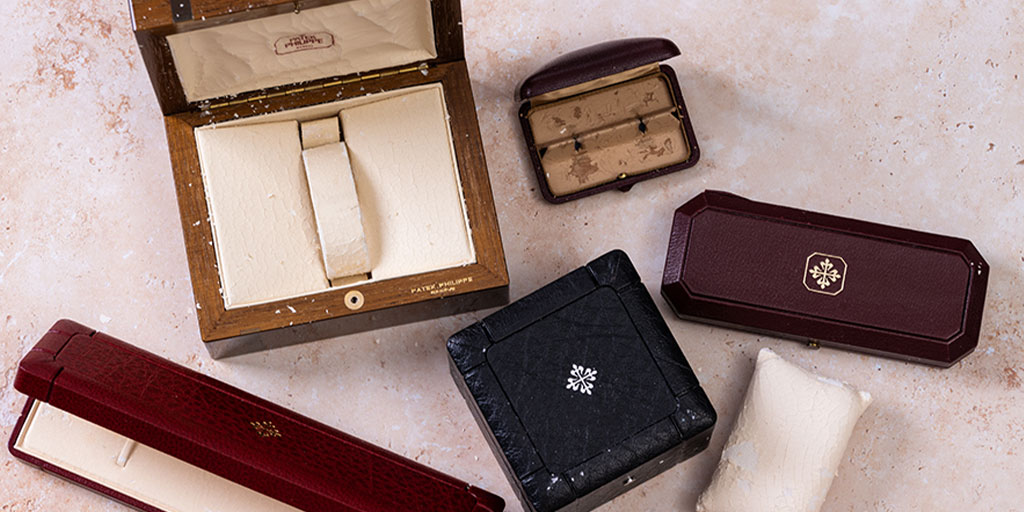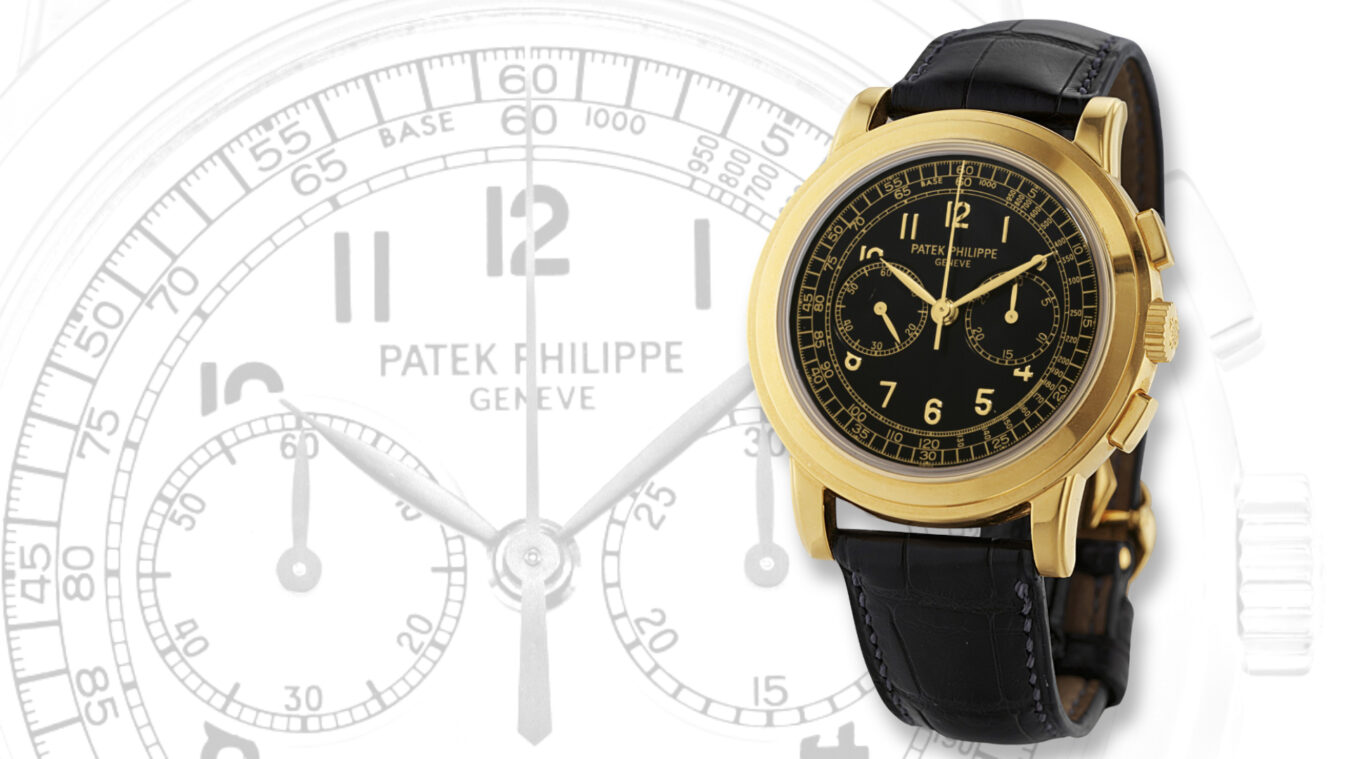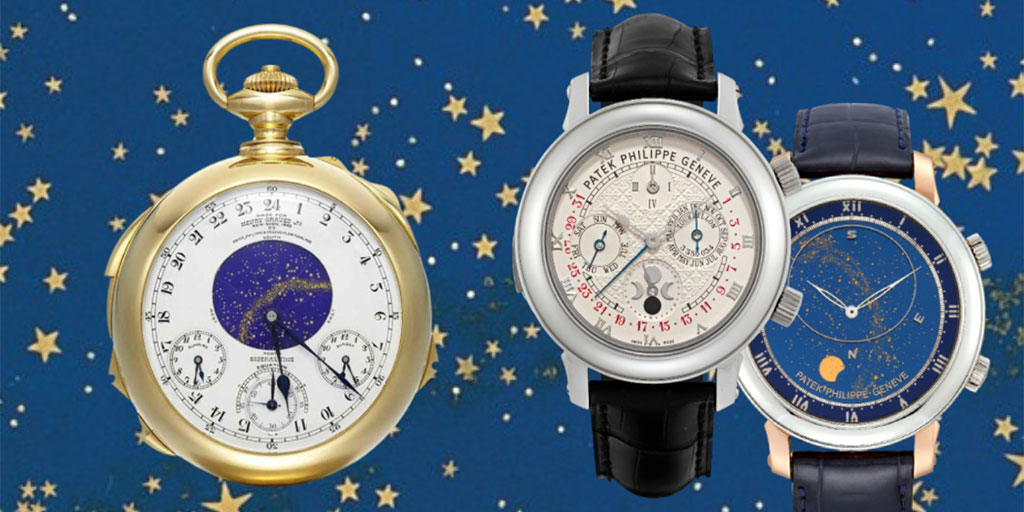Anyone who collects vintage watches will know that sometimes opening an original Patek Philippe box, especially from the late 1980s, 1990s and early 2000s is a messy business. It’s not uncommon for a small snowstorm of flakes from the inside lining to land unapologetically on the table or your lap. For most, this is an unwelcome experience and a complaint we hear regularly from collectors.
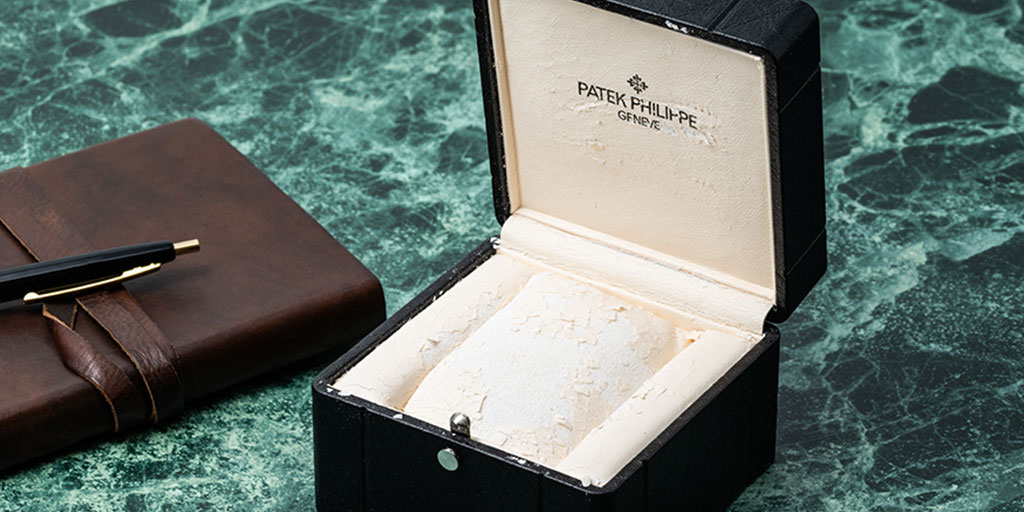
At Collectability, our goal is to dive deep into all things Patek Philippe so we could not leave this irritating issue as an unresolved outlier in the company’s usual quest for perfection. The obvious first question that needed to be answered is why would the world’s finest watches be entrusted to boxes that eventually deteriorate and certainly do not last for generations?
It is sometimes assumed that the deterioration of the lining is the result of the glue used in production which in turn causes the fabric to flake. We now know that this is not the case, it is the fabric itself that starts to break down. We discovered that the fabric used on the interior of many box designs of the era is called Bukana® and is made and sold by a Swiss company, Winter & Co. which has been producing “Creative Coverings since 1892”. The company started as leather traders but began experimenting with artificial leathers in the mid-1950s. From the late 1960s, through the 1970s and 1980s, leather-like products such as Skivertex®, Pellaq® and Bukana® started to appear. By the late 1997 environmentally friendly products such as Ecorel® were being produced for displays and box interiors. Winter & Co. is a family business that produces luxury fabrics for many discerning, high-end watch and jewelry companies.
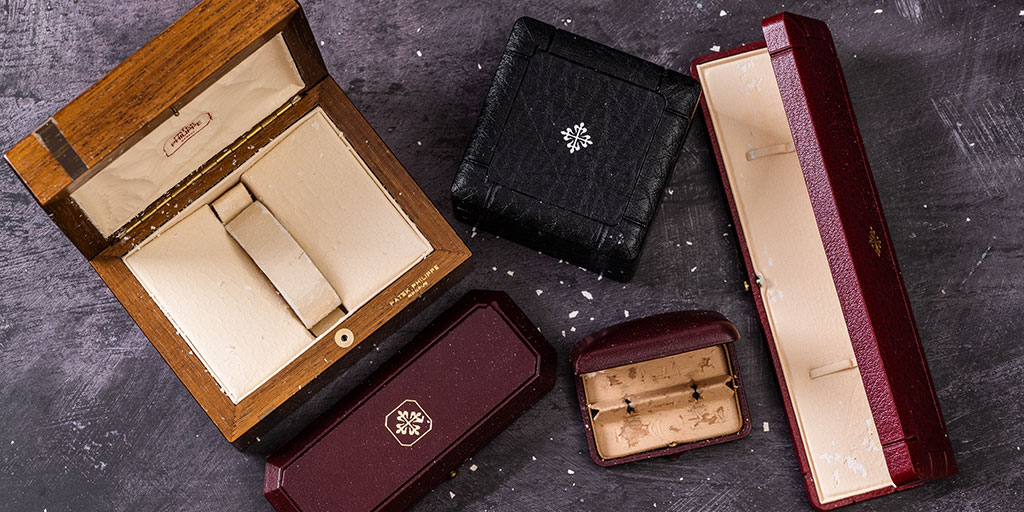
Let’s have a closer look at Bukana® and understand why Patek selected it to line its watch boxes and display materials. Bukana® has a polyurethane surface and microfiber base. It looks just like fine leather, but it is much easier to work with than leather and has a surface uniformity that is hard to replicate with natural leather. It is super-easy to sew or glue, or to add a foil-stamp or silkscreen a logo. It’s great for the interiors of retail counters and displays because it has a strong colorfastness to light, and because it is slightly stretchy, it can easily be used on rounded shapes. It is soft and therefore a perfect, non-scratch companion for a delicate watch. Most importantly, Bukana® has no chemical reaction with steel or gold and does not oxidize metal which can happen with leather due the tanning process. When Patek first started working with Bukana® in the late 1980s, it was (and still is) considered a luxury fabric as it is expensive to buy.
So, this artificial fabric seems to have everything going for it and it’s easy to understand why Patek decided to use it. It’s deterioration over time was not expected and in fairness, it was a relatively new product when first used and therefore not tested by time. Although, according to Winter & Co., fabrics made from polyurethane are only expected to last two – three years in “normal wear-and-tear” retail conditions. Some fabrics can last up to a maximum of five years when kept in good atmospheric conditions (i.e., not in the humidity of Florida or many tropical areas throughout the world).
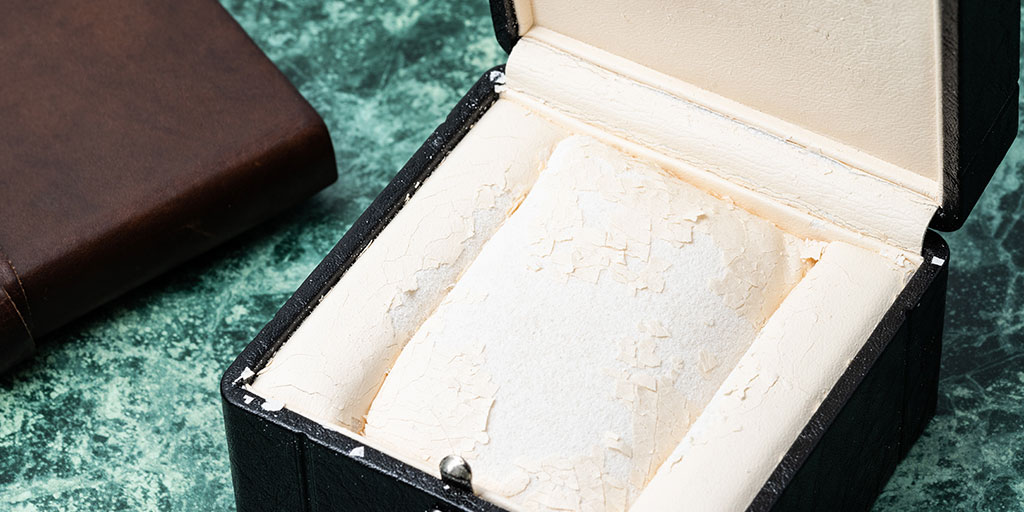
The process of breakdown and disintegration of the polyurethane fabric used in boxes is called “hydrolysis”.
Interestingly, if a polyurethane fabric needs to last longer than five years, say up to a maximum of ten years, Winter & Co. can change the chemical composition of the fabric prior to manufacturing which will enable better resistance to deterioration over time. Presumably, this was done for Patek’s fabric as we know the interior of most boxes do not deteriorate until at least ten years.
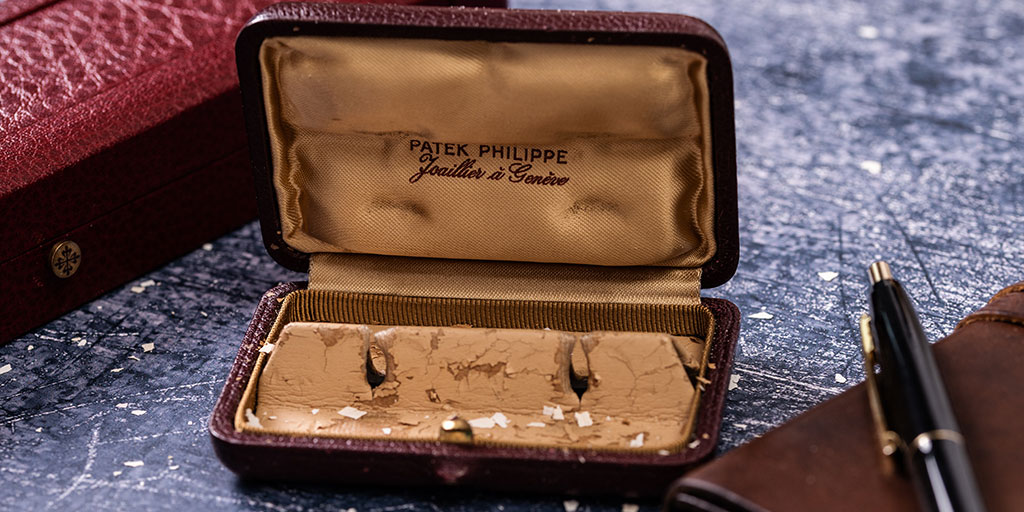
Can anything be done to prevent deterioration? We’ve heard of collectors spraying their boxes with varnish or keeping a sachet of desiccant in the box. Sadly, according to Winter & Co., nothing can be done. Today, Patek no longer uses the fabric that caused so much grief for collectors of watches, particularly from the 1990s. We don’t believe that Patek, or indeed any other manufacturer will go back to the old days of silk or velour (cotton) interiors — as vintage collectors know so well from treasured original boxes that seem as good as new even when they are over 100 years old. Today, the manufacturing of boxes is a large-scale undertaking and natural fabrics are no longer practical.
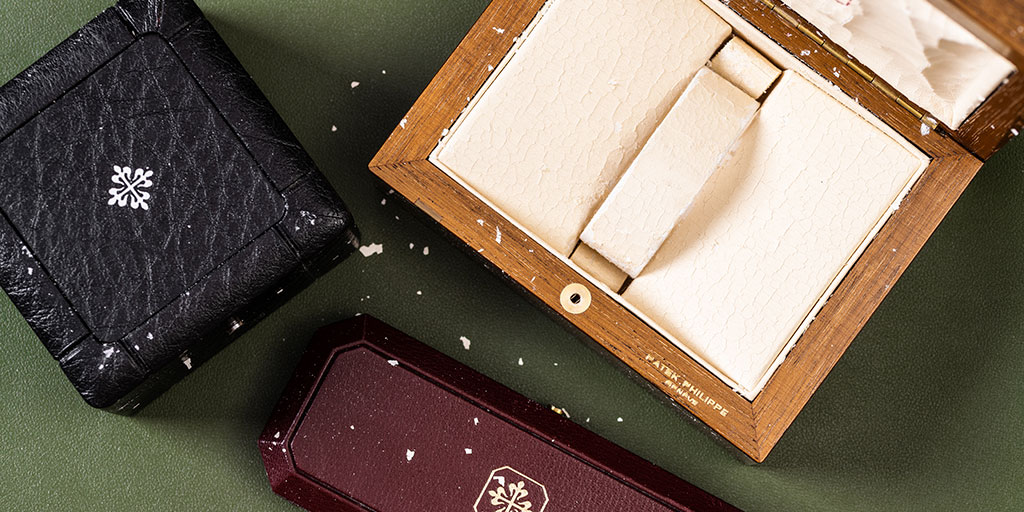
In case you are interested, polyurethanes were invented back in the 1930s by Professor Dr. Otto Bayer (1902-1982). There are various types of polyurethanes, which look and feel very different from each other. They are used in a wide range of products, from coatings and adhesives to shoe soles, mattresses, and foam insulation. However, the basic chemistry of each type is essentially the same. Use of polyurethanes increased during World War II, when they were utilized as a replacement for rubber, which at the time was expensive and hard to obtain. By the 1950s, polyurethanes were being used in adhesives, ridged foams, and is still used in flexible cushioning foams. In 1981, surfboards were made of polyurethane; and in 1990 the first football was made containing polyurethane materials, rather than traditional leather.
Nowadays, thanks to the drive to produce sustainable products, petroleum-based fabrics are no longer the only option to replicate leather. A longer lasting material called Nabuka® is made from re-cycled plastic bottles to produce a fabric that looks and feels like nubuck leather. Even recycled paper can be made into a soft fabric with a leather like finish such as Ecorel®Pure Skiver. There’s a relatively new fabric called Wintan® Vintage which is made from recycled leather fibers. Velour can now be made from recycled PET bottles.
Fortunately, the current production Patek Philippe boxes appear to be flake free, and collectors hopefully need no longer be be frustrated by the deterioration of the interior of the box containing their precious watch.

